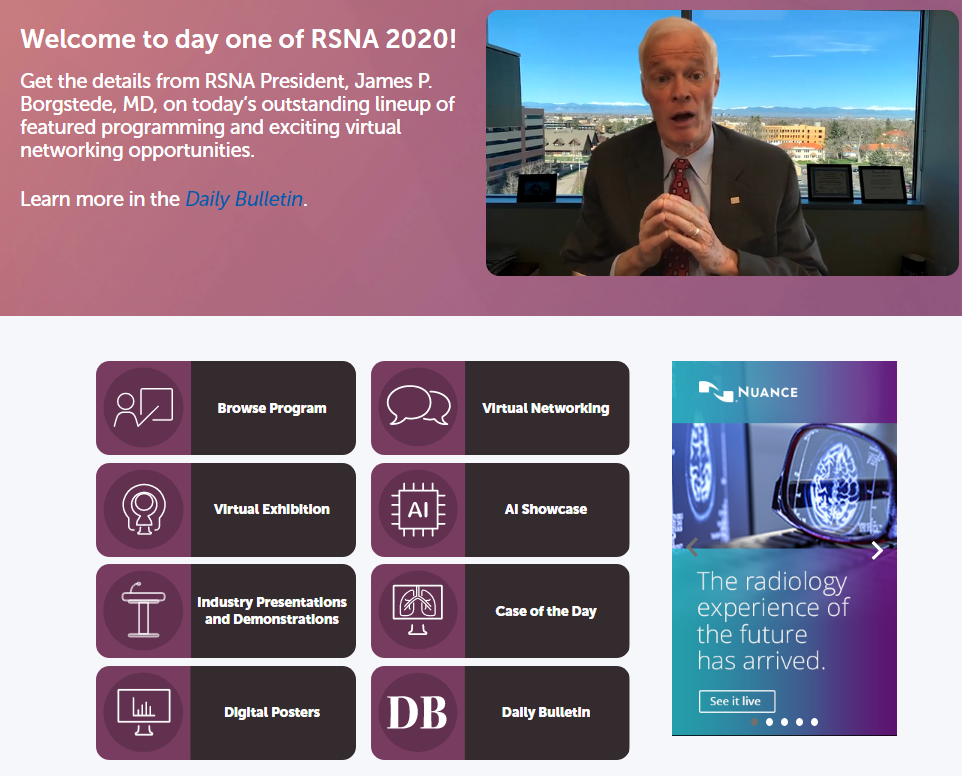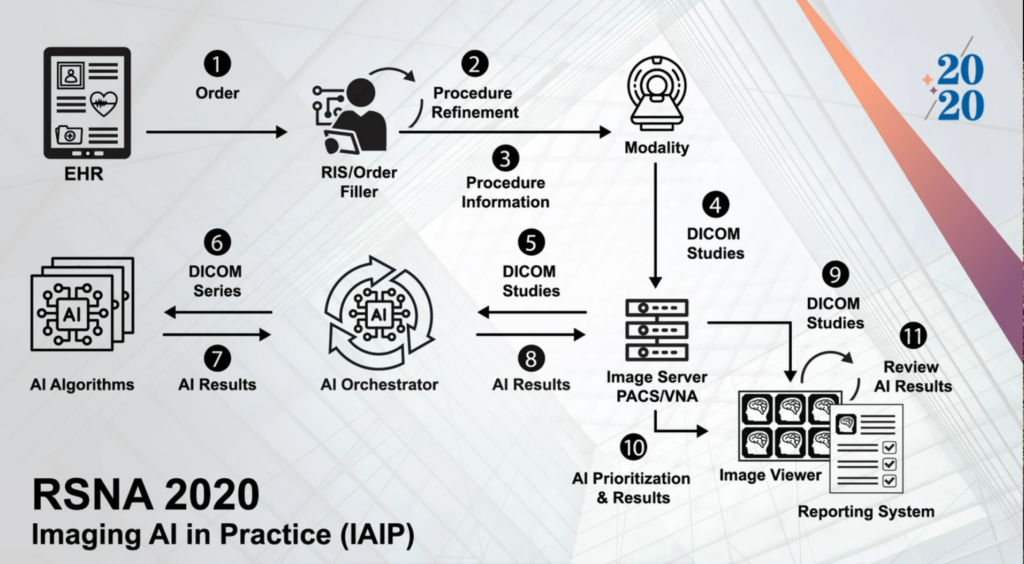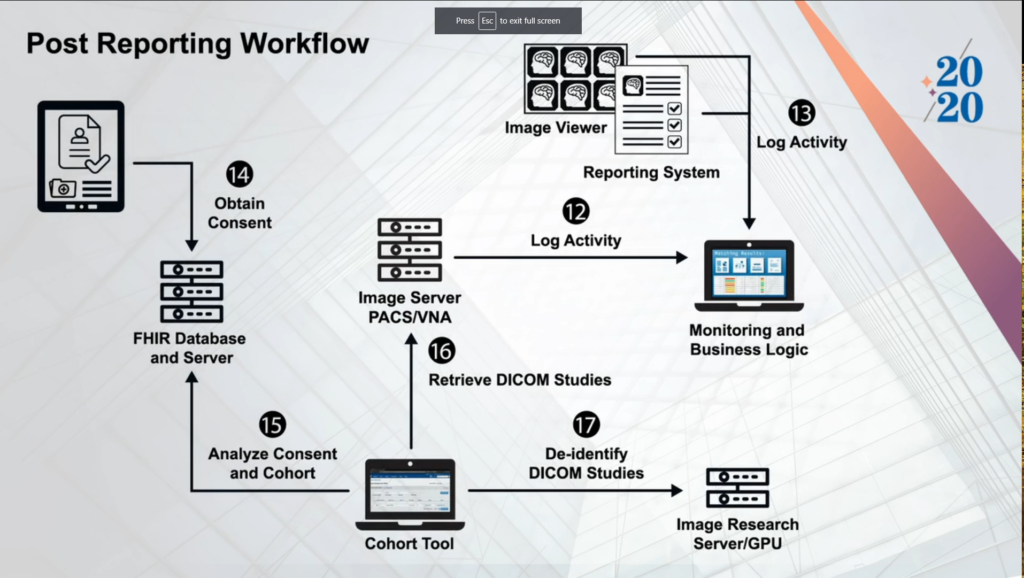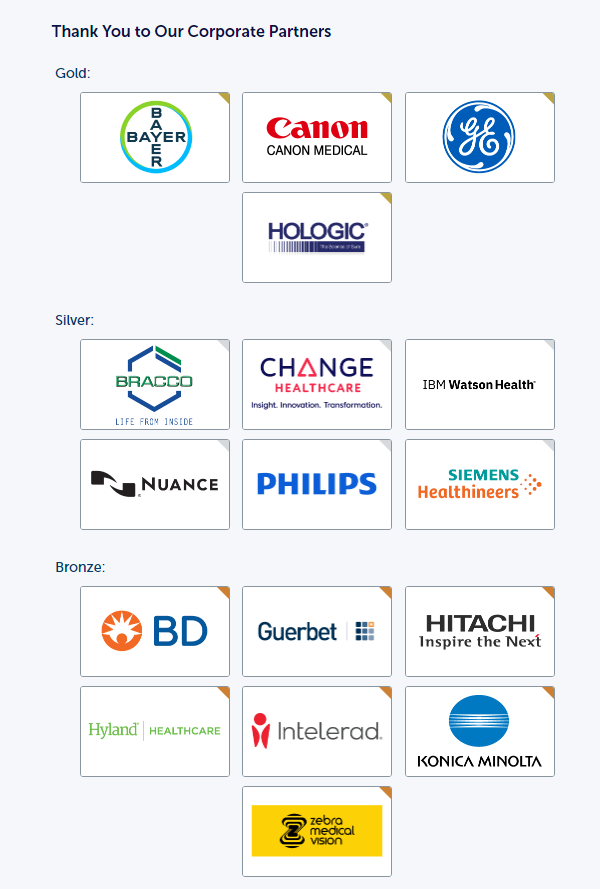The Radiological Society of North America’s (RSNA) 106th Scientific Assembly and Annual Meeting was scheduled to take place at McCormick Place in Chicago, IL, starting on November 29th, in 2020; however, due to COVID-19, the meeting moved to an all virtual event from November 29 to December 5th. I was fortunate to attend RSNA 2020 in its first virtual only format. This year’s tagline was “Human Insight/Visionary Medicine.”

This year included live meeting sessions running from 8 a.m. to 6 p.m. on November 29 to December 5th. If you were unable to attend the live programming as it happened, it converted to on demand sessions thereafter. One advantage of the live programming sessions was the ability to chat with other attendees while it was occurring. However, not all of the live programming sessions were in fact live even though they broadcasted originally live. Instead many of these live sessions occurred without the normal moderator present and were prerecorded. The meeting also included on-demand content available 24/7 during that time period. This year many exhibitors had virtual booths for exhibition and there was also virtual networking available. For those who paid for a premium registration, there was also the benefit of extended on-demand access to most meeting content until April 30, 2021. In addition, case of the day and digital posters were available at RSNA 2020. Navigation presented to users upon login to RSNA 2020 was as below:

Outside of virtual booths, this year included various ways to get the latest on industry developments including two theaters: an Innovation Theater and AI (artificial intelligence) Theater. This was in addition to Lunch & Learns, Featured Demonstrations, Pre Show Presentations, and Roundtable Discussions. There was also an Imaging AI In Practice Demonstration including four videos on the following topics: 1) Introduction, 2) Work with AI, 3) Evolve with AI, and 4) Save Time with AI. These Imaging AI In Practice Demonstration videos included helpful flow-charts to describe how the AI Orchestrator and AI Algorithms integrate into the radiology workflow:


There was certainly a large amount of content focused around AI at RSNA 2020. I attended a session titled Artificial Intelligence: Beyond Interpretive Considerations that consisted of four separate talks. One talk in this session discussed how there was minimal merger and acquisition activity in radiology AI in 2020 and there were six companies involved with radiology AI that previously attended RSNA in prior years that appear to no longer be active. Another talk discussed Generative Adversarial Networks and their potential to create synthetic data in radiology. An example was shown on using a StyleGan2 (a type of GAN) to create synthetic chest radiographs. Another talk discussed the liability risks in using AI in medicine. Those potentially at risk include radiologists, healthcare systems, and even AI developers. The presenter discussed how due to lack of meaningful case law to date a lot remains unknown. I also attended another session titled Creating Publicly Accessible Radiology Imaging Resources for Machine Learning and AI. One talk in this session discussed using the The Cancer Imaging Archive (TCIA) as a dataset for AI training. Another talk mentioned some other datasets including the Alzheimer’s Disease Neuroimaging Initiative (ADNI), Medical Information Mart for Intensive Care (MIMIC), National Biomedical Imaging Archive (NBIA), the Lung Image Database Consortium (LIDC), and datasets from Stanford University’s Center for Artificial Intelligence in Medicine and Imaging. In addition, discussion was made of efforts from developing the Medical Imaging and Data Resource Center (MIDRC), an open-source database with medical images from COVID-19 patients, being collaborated on across more than 20 organizations in the U.S.
This year there appeared to be less focus on 3D printing. Although one live session titled Medical 3D Printing Regulatory and Quality Considerations was available. One talk in this session discussed sterilization for 3D printed devices. There was discussion made of sterilization approaches for 3D printed devices both in the hospital (steam, hydrogen peroxide, and ethylene oxide) and outside the hospital (gamma radiation, e-beam, hydrogen peroxide, and ethylene oxide). There were also at least two on-demand sessions available in the Innovation Theater from two industry leaders in 3D printing: 1) Extending Access to Extended Reality from Materialise and 2) Learnings from the Field: Clinical Care and Device Development in the COVID Era from Formlabs Medical.
The sponsors of RSNA 2020 included those below:

If you are interested learning more about past in person RSNA meetings at McCormick Place, I attended the RSNA annual meeting last year in 2019, and the prior two years in 2018 and 2017. You can find more information and numerous photographs at https://www.toddmccollough.com/radiological-society-of-north-america-rsna-meeting-in-chicago-il-in-2019-at-mccormick-place, https://www.toddmccollough.com/radiological-society-of-north-america-rsna-meeting-in-chicago-il-in-2018-at-mccormick-place/, and https://www.toddmccollough.com/radiological-society-north-america-rsna-chicago-il-2017-mccormick-place/.
